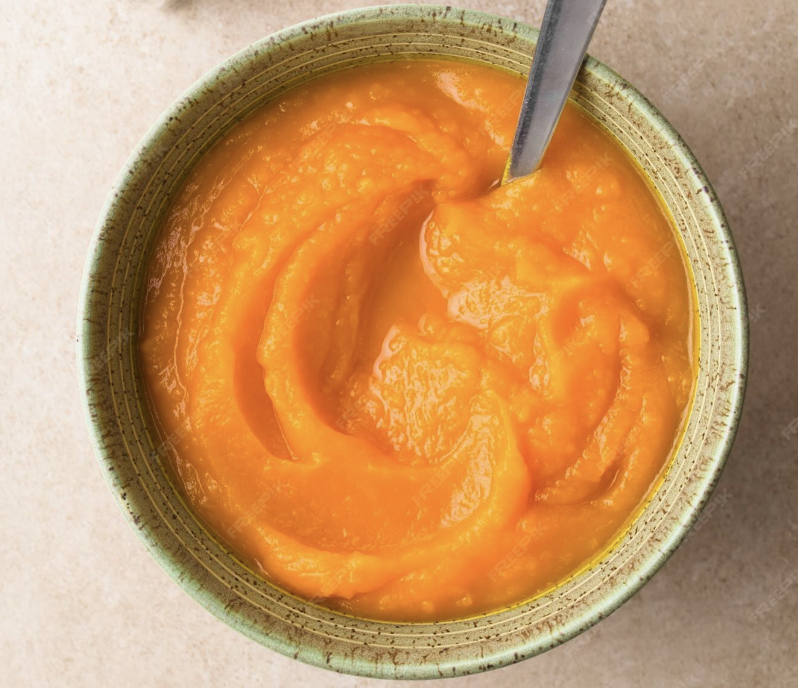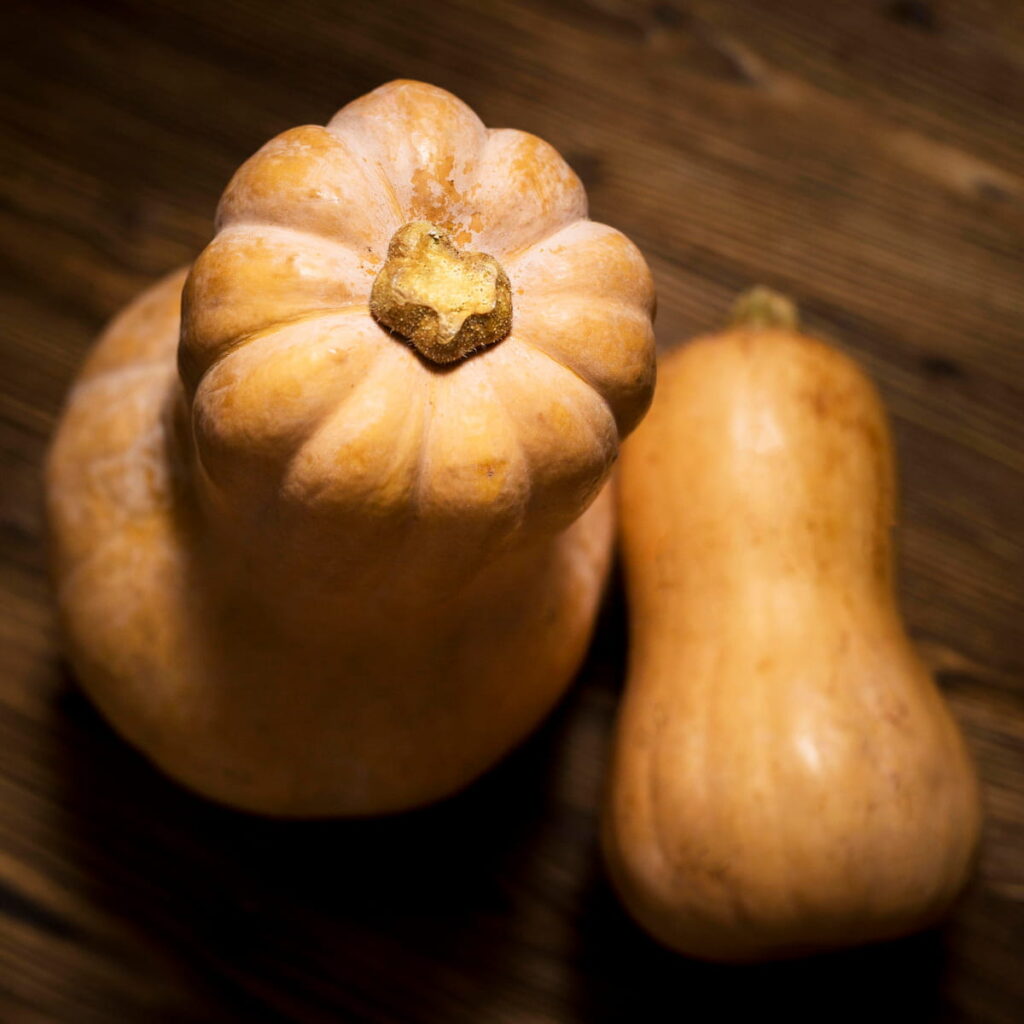How to Make Butternut Squash Puree
During the fall and winter months, I love eating winter squash. I’m not a big fan of it as a savory side dish or soup, but I love it in desserts. In order to use it in most desserts, it must be pureed. Discover how to make butternut squash puree at home. The flavor of homemade puree can’t be matched by store bought. You’ll appreciate the difference and so will your family.
*As an Amazon Associate I may earn from qualifying purchases at no cost to you.

Why Butternut Squash?
Butternut squash is often overlooked for it’s relative, the pumpkin. Pumpkin is, by far, the most popular winter squash used in cooking and baking. Other squash, however, like butternut offer such a beautiful flavor to dishes. They really should have a special place on the counter right alongside the pumpkin.
Winter squash tend to lend an element of moisture to baked goods that rival things like zucchini and carrots. It’s the perfect addition to your fall and winter baking. Butternut squash is nutty, earthy, and has a sweetness that compliments so many different types of dishes. Don’t get stuck in the pumpkin world, you’ll be happy you tried this delicious squash.
All winter squash tend to be high in fiber and vitamins. Butternut is high in beta-carotene (like carrots) so it’s good for eye health. High fiber is good for digestion and cholesterol levels. It’s rich in potassium and magnesium which are great for heart health. Butternut squash is also high vitamins A & C which can help boost immune systems.
Not only does butternut squash taste great, it adds a sneaky healthy boost to whatever you cook. Your kids won’t suspect a thing!

How to Make Butternut Squash Puree
Preheat the oven to 350℉, 180℃.
Prepare the butternut squash
First I took the butternut squash (acorn squash, pumpkin, or whatever other winter squash would have worked as well) and sliced it in half. Once sliced, I removed all the seeds and the stringy part around them.

Once the seeds were scooped out, you can either roast them plain or spray them with a little oil. If I choose to spray the squash (usually I don’t) I usually use some good quality olive oil. Avocado oil or another good quality oil would work too. Just avoid vegetable or canola oils as they are quite inflammatory.
Place the squash face down on a parchment paper lined baking sheet.
Bake and Cool the Squash
Bake in the oven until soft. My squash took 50 minutes before it was done.

Test the squash with a fork to see if it’s done. If the fork slides in easily your squash is ready to come out. My fork slid in nicely in several places so I knew it was done.
I let it cool for 20-30 minutes so I could handle it to scoop out the flesh.

Puree the Butternut Squash
Once cooled, I scooped out the flesh and composted the skin (or you can toss it if you don’t have a way to compost it). To get the puree consistency needed to bake with it, either use an immersion blender or a regular blender to puree the squash. Otherwise, the flesh will be stringy and will give you an interesting texture that you may or may not like. I don’t, so I went ahead and blended it with my immersion blender.

One butternut squash will typically yield 2-3 cups of puree. This should be enough for several recipes!
Use Butternut Squash Puree in These Recipes:
Butternut Squash Bread with Sourdough Discard
Butternut Squash Dinner Rolls
Frequently Asked Questions
Q: How long is butternut squash puree good for?
A: Butternut squash puree will last in the fridge for 3-5 days. It also freezes well and will last for at least 6 months in the freezer in an airtight freezer bag or container. Be sure to label the bag/container you store it in with what it is and the date.
Q: How much puree will one medium/large squash yield?
A: A typical 3 pound butternut squash will yield around 3 cups of puree. This can vary slightly based on the size of the squash and the cooking method you choose.
Q: Can butternut squash be mashed?
A: Absolutely! Instead of pureeing after it bakes, use a potato masher to mash up the squash. You can add some milk, butter, salt, and pepper to it and serve just like you would mashed potatoes. It’s a sweet and healthy substitute.
Q: Can you use butternut squash instead of pumpkin puree?
A: Yes, you can. Substitute butternut squash for pumpkin 1 for 1. If you need 1 cup of pumpkin, you can substitute it for 1 cup of butternut squash puree instead.
Q: What can I do with butternut squash puree?
A: Butternut squash is such a versatile vegetable, it can be used in so many things! Try it for:
- Baking: Breads, muffins, pancakes, and waffles.
- Savory Dishes: Soups (bisques), curries, sauces for pasta, or as a base for risotto.
- Sides: Mixed with a little butter and seasoning for a simple side dish.
- Baby Food: A great, nutrient-dense first food.
Q: What is the best way to cook the squash (roast, steam, or boil)?
A: The roasting method is highly recommended for the best flavor. Roasting caramelizes the natural sugars, resulting in a deeper, sweeter, and more concentrated flavor in your puree. While steaming or boiling is faster, these methods can make the squash watery and dilute the flavor.
Q: My puree is too thick/stiff. What can I add to thin it out?
A: You can add a little water, milk, cream, or broth to thin it out a little. Add liquid very slowly, about a teaspoon at a time, until you get the consistency you would like.
Q: My puree is too watery. How can I thicken it?
A: You can generally fix this one of two ways:
- Straining: Line a fine-mesh sieve with cheesecloth and let the puree drain over a bowl in the refrigerator for 1–2 hours to release excess moisture.
- Cooking Down: Place the puree in a saucepan and cook it gently over low heat, stirring often, until some of the liquid has evaporated and it reaches the thickness you prefer.
Q: Do I need to peel the butternut squash before cooking it?
A: No, you don’t and it’s actually much easier not to! Butternut squash skin is incredibly tough when raw. It’s best to leave the skin on, cook the squash until the flesh is very soft, and then easily scoop the flesh out with a spoon. Discard the skin afterward.






